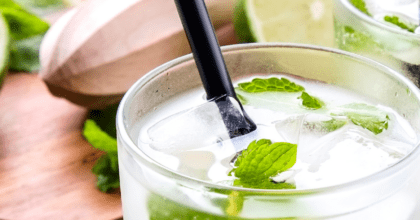62% of Brits say they are frying less food at home now compared to a few years ago
Many UK consumers are frying, baking and eating less bread today, which is melting volume sales of yellow fats and edible oils. Indeed, Mintel’s Yellow Fats and Edible Oils UK 2017 Report reveals that over three in five (62%) Brits who buy butter, spread, oil and fat say they are frying less food at home now compared to a few years ago, while 43% say they are buying fewer bread products and 42% say they are baking less at home.
And it seems that it’s older consumers in particular who are refining their use of edible oils and yellow fats. Of those over the age of 55 who buy butter, spread, oil or fat, almost three in four (73%) say they are frying less food at home now compared to a few years ago, while half (49%) say they are baking less than a few years ago. Meanwhile, it’s younger consumers who are slicing their bread consumption, with half (49%) of those aged 18-24 who have bought butter, spread, oil or fat in the last three months* agreeing they are buying fewer bread products compared to a few years ago.
Sales of yellow fats and edible oils have been in decline. Indeed, volume sales of spreads, such as margarine, are estimated to have fallen by 27% between 2012 and 2017, while sales of edible oils are down 10%. Butter bucked the downward trend in spreads and edible oils, however, increasing volume sales by 11%, benefiting from the desire for more natural and less processed products.
Richard Caines, Senior Food and Drink Analyst at Mintel, said:
“Changing eating habits have had an impact on sales of butter, spreads and oils. Most buyers frying less food than a few years ago is a continuation of a long-term trend, including having fewer fried breakfasts. Meanwhile, people cutting back on bread means they are not using butter or spreads as much as they used to, negatively impacting on sales. Yellow fats also look to be suffering from an end to the home baking boom. As a result of this, encouraging new uses will be important in driving future growth in the yellow fats and edible oils market.”
While Brits may be buying less yellow fats and edible oils, butter, spreads and oils are still household staples. Over nine in 10 (92%) UK consumers have bought any butter or spread in the last three months, with 74% purchasing butter and 67% spread. Meanwhile, almost four in five (78%) have bought any edible oil, with olive (41%), vegetable or rapeseed (38%) and sunflower (33%) the most commonly bought oils.
The price of butter has been rising in 2017 and the cost of butter or spreads is a key purchasing influencer for many. Of those who have bought butter and spread in the last three months, two in five (40%) say they look for a product for spreading on toast, sandwiches, etc. which has a low price, compared to a quarter who look for low saturated fat (26%) and low fat (24%).
There are factors, however, that could butter up sales of yellow fats and edible oils. Nearly three in 10 (28%) say they would pay more for products supporting British farmers, while just under a fifth say they would pay more for an organic product (19%) and the same proportion would pay more for a product that guaranteed higher animal welfare (19%). Furthermore, 44% say that the regional origin of a product, for instance Cornish butter, increases its appeal.
“Provenance in terms of coming from a particular region increases a product’s appeal and offers scope for adding a point of differentiation that goes beyond just promoting butter as British. Supporting British farmers is clearly more emotive than just British provenance, as it is telling a story of farmers in particular regions and spelling out the brand or retailer’s support for them. In olive oils, regional origin could also be promoted more. Stressing regionality is one way to lift oils out of the commodity category, and to support premium pricing.” Richard adds.
Finally, while olive and sunflower oils may be the more traditional choice, coconut oil is showing signs of popularity. One in three (33%) Brits see coconut oil as ‘trendy’, compared to just 12% who say the same of olive oil, with 7% of Brits buying coconut oil/fat in the past three months. What’s more, 58% of those who buy coconut fat or oil say it is healthy. According to Mintel Global New Products Database (GNPD), one in eight (12%) butter, spread and oil products launched so far in the UK in 2017 contained coconut oil, up from 8% of launches in 2016.
However, looking to the future it seems coconut oil may have a rival. Indeed, while avocado has become a widespread toast-topping phenomenon, it may also soon infiltrate the oil market, with 24% of Brits saying avocado oil is ‘trendy’.
“The number of new product launches in oils and spreads featuring coconut has increased significantly due to coconut being an on-trend ingredient. This is reflected by a third of people perceiving coconut oil to be a ‘trendy’ ingredient, the strongest association for this type of oil. While avocado oil may be suffering from lack of awareness, there is clearly scope for retailers to shout about the health credentials of avocado oil more strongly to support their increased presence on supermarket shelves, and their inclusion in spreads.” Richard concludes.
*Three months to July 2017
Press review copies of Mintel’s Yellow Fats and Edible Oils UK 2017 Report and interviews with Richard Caines, Food & Drink Analyst at Mintel, are available on request from the press office.
-
Mintel StoreGet smart fast with our exclusive market research reports, delivering the latest data, innovation, trends and strategic recommendations....View reports
-
Mintel LeapMintel Leap is a revolutionary new AI-powered platform that will transform your research process....Book a demo







































